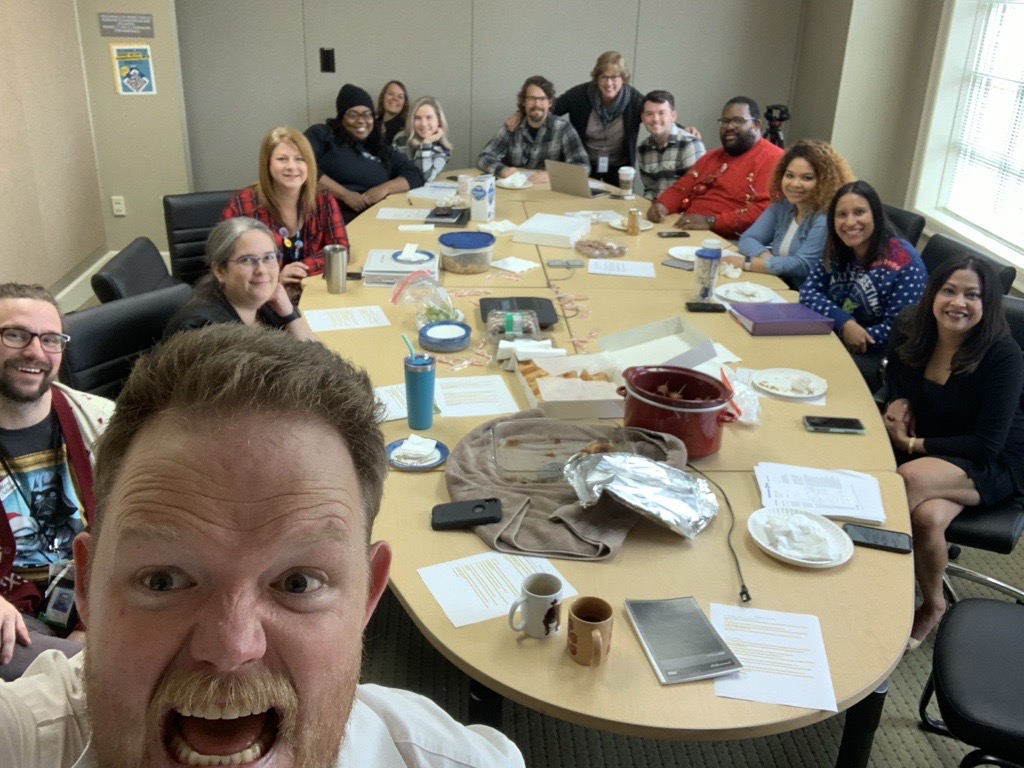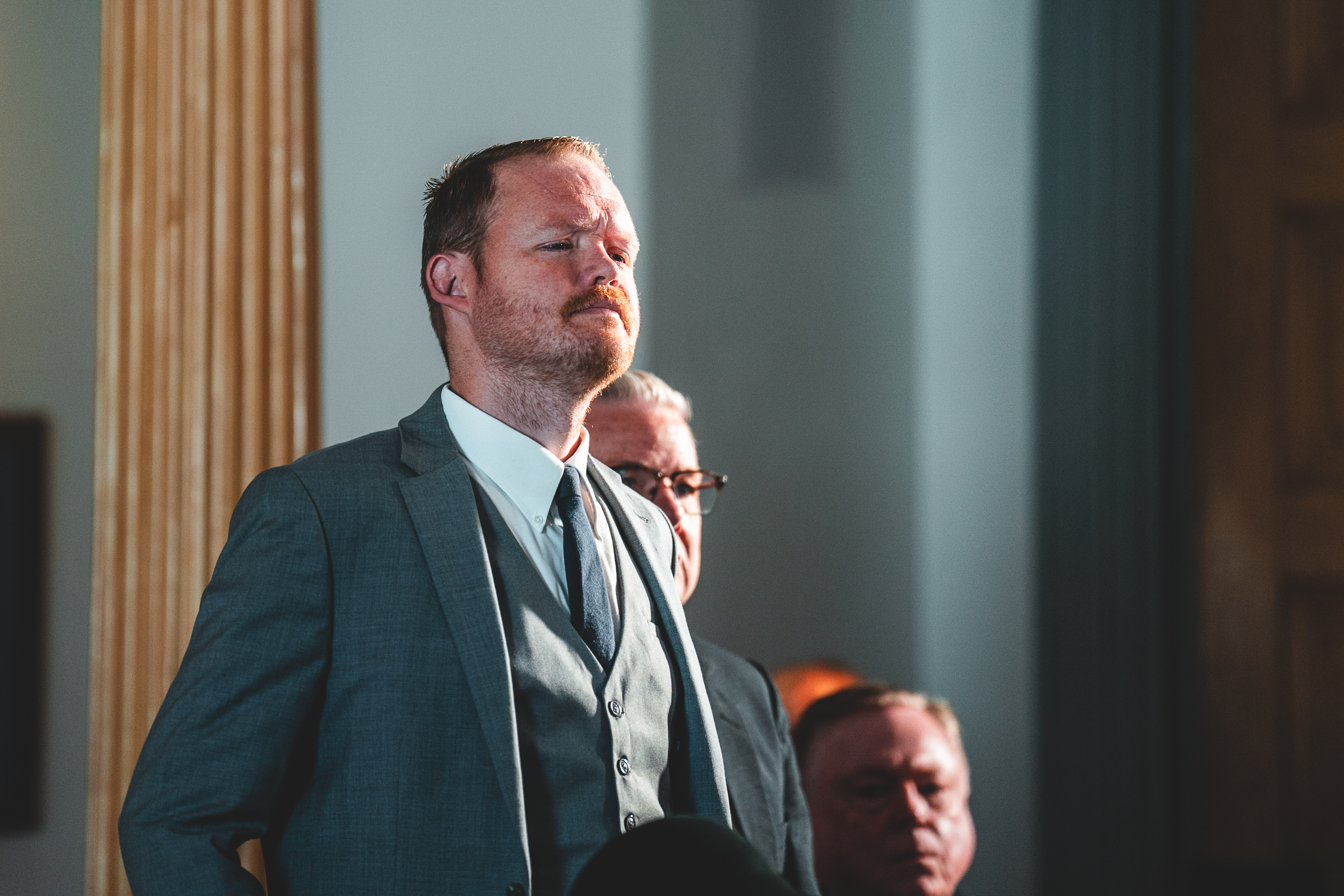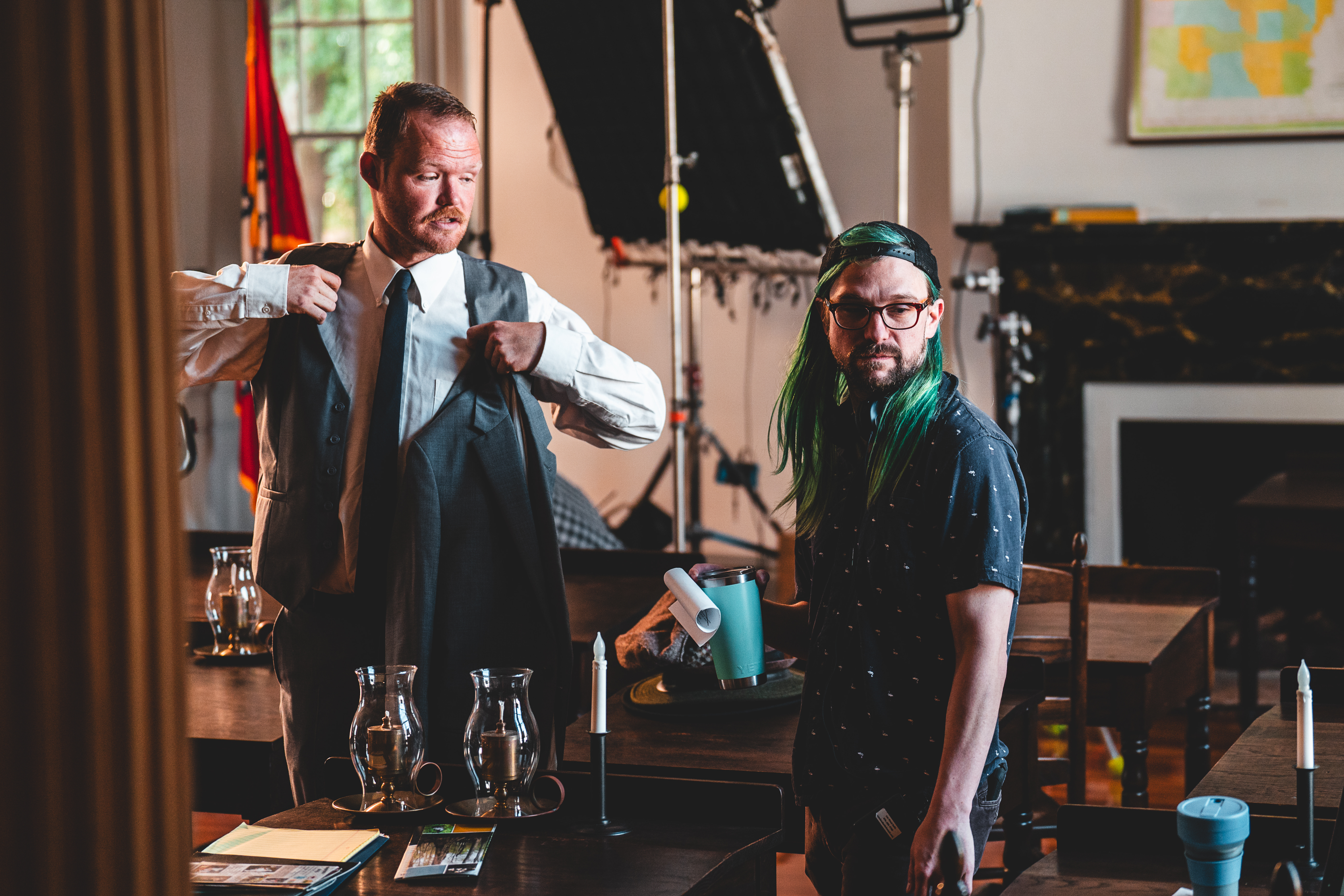The Big Time
Writers’ rooms are places of legend. For shows like “Saturday Night Live,” “Seinfeld” or countless others, writers’ rooms are where colorful and storied careers begin. For TV writers, the chance to work in a writers’ room is “The Big Time.” This is what made the formation of Arkansas PBS’ “Mystery League” writers’ room such a special occurrence.
“Mystery League” is an all original, live-action, fictional children’s show produced entirely by Arkansas PBS. At 20, 15-minute episodes – it is one of the largest productions the station has ever undertaken. It goes without saying that when I was invited to help assemble and guide a group of producers and educators through the development, outlining and writing of these 20 episodes, I was overwhelmed.
I have written a lot of screenplay pages. I have even taught screenwriting quite a bit. However, I’ve never done both at the same time. The folks in our writer’s room were selected for dozens of reasons – namely their varying perspectives and backgrounds. I knew three things going in:
1. Most of these folks hadn’t written many screenplay pages or broken many stories.
2. I had never led a group this size in the development of a story of this scope.
3. We had about four months to get the job done. Which is unheard of, even for seasoned writers’ rooms.
So, what exactly is a writers’ room, anyhow?

Why are Writers’ Rooms Unique to TV?
Most creatives understand it is hard and often problematic to create art as a committee. This is why there is a director on every film set. You can’t have 150 people interpreting the script in 150 ways – everyone on set answers to the director’s vision. This ensures that the final product is consistent and singular.
The same argument could be made for novels. J.R.R. Tolkien is inseparable from “The Lord of the Rings.” “The Old Man and the Sea” could not be written by anyone but Hemingway. So, what makes TV writing different? Why do we insist on creating these stories by committee?
Well, it all comes down to schedule and scope.
Why We Think We Need Writers’ Rooms
TV has classically held to the weekly schedule – which means, not only do we demand unique and interesting plots, but we demand a new one every seven days. With the advent of streaming, and fading of the historic “pilot” season, these demands have loosened – but TV writing remains some of the fastest and most-demanding writing there is.
Secondly, cable TV shows have classically run 24, half-hour episode seasons. That means the writers’ rooms have churned out 12 hours of content per year for somewhere between 3 to 10 years. I mean, good grief, “The Simpsons” are in the middle of their 34th season! And what’s more, these individual stories must avoid repeating or negating any plot point or detail that has been written previously.
Keeping a grand narrative within a single human brain would be exhausting for anyone other than George R.R. Martin or Leo Tolstoy.
So, you can see why the writers’ room was an initial necessity for TV production. But I think there may be more to its success than that…

Getting to the Big Questions
What makes a story successful?
I don’t know if that question has an answer – or at least a single answer. However, once film and TV industrialized storytelling the going measure of success became that story’s ability to connect with an audience. The bigger the audience – the more views – the more successful.
Why do audiences connect with certain stories?
Wow. Another toughie. I don’t think there is a single answer to this one either.
However, in the most general terms. We seek understanding in the stories we hear. People want to find a bit of themselves in stories. If they can relate to characters – they might find comfort or hope or even answers about how to handle problems or choices in their own lives – This is truly the magic of storytelling.
So, in TV, the bigger your audience, the more successful you are. And that wider audience demands more accessible plots...
Why We Really Need Writers’ Rooms
As I said before, a story that adheres to a singular perspective is consistent and powerful – This is what makes “The Old Man and the Sea” a classic. It is Hemingway, through-and-through. But millions of readers put the book down every year because they don’t connect with it. They don’t see any of themselves in Hemingway’s perspective.
So, while a writers’ room might sometimes be arduous or even trying – it involves many other voices in the act of creation. And having those perspectives and choices and ideas find their way to the page and screen means that a greater audience might find echoes of themselves in your story – making those stories special for a much larger group of people. And making your work, as a storyteller, more worthwhile.

The Unforeseen Wrench of Educational Content
I am a storyteller. While I did teach high school and college for a couple of semesters – I would not consider myself an educator by any stretch of the imagination. The fact that Arkansas PBS (and PBS in general) produces educational TV often complicates my relationship with the scripts I write.
Luckily, more than half our writers’ room consisted of licensed Arkansas educators who could spot a problematic snippet of dialogue a mile away.
Our process started with the educational points we needed to hit, and we built plots around them. “Mystery Mash” was constructed to help kids learn where all their food comes from. “Diner Disaster” was built to instruct kids in all the different jobs, even in small communities like Mulberry Springs.
Sometimes these educational parameters might be frustrating. You could feel the direction a story wanted to go, but that direction didn’t support the educational strategy. However, it was Plato who said, “Necessity is the mother of invention.” Often when the educational guidelines forced us to take a plot into an unforeseen direction – the story was usually better for it. Limitations often make you a better creator.
All of this to say – while our young writers’ room struggled with the age-old terrors of scope and schedule – we also dealt with a third, less-common hurdle – remaining both narratively engaging and educationally appropriate for all those twenty episodes.

A Personal Discovery About Writers’ Rooms
I had a loose understanding of most of these ideas when I was asked to lead the “Mystery League” writers’ room in the fall of 2022. I knew that as someone who usually does most of my pure creation alone – this was going to be an uncomfortable process for me. I had faith in my ability to map out and write a singular narrative, but to try and do that with constant notes and ideas from other people – I was afraid we might end up with a “Frankenstein’s monster” of a kids’ show.
I could not have been more wrong.
As our weeks progressed – the rest of the team learned how to break story around the three-act structure, and I learned increasingly about the educational choices that must go into every
episode, scene and line of dialogue. And soon, we stopped being a group of people making choices – all the tumblers clicked into place –
And our singular voice emerged.
My name is on every episode of this season of “Mystery League” because I had the most experience writing screenplay formatting and keeping myself to a page count. But these episodes were written by the Arkansas PBS writers’ room.
The Big Time, indeed.
By: Corey Womack
JOIN US
Free “Mystery League” Sneak Peak event
Saturday, January 27, at 10:30 p.m.
Museum of Fine Arts
RSVP for this free event here

